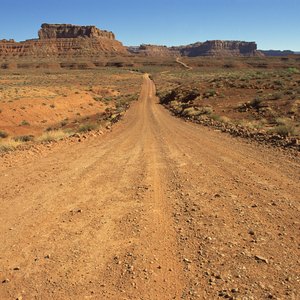
On the face of it, buying raw land should be simpler than buying brick and wood. Faulty plumbing, decrepit furnaces, and missing roof slates aren’t an issue when your land’s an undeveloped dusty plot. In reality, you’re going to have to do lots of research to make sure your land’s viable. Zoning, access and utility problems may catch out all but the most seasoned speculator.
How Will You Use Your land?
Land is typically zoned into use categories. If your intended use does not meet the zoning restrictions, you can’t carry out your project. Ask your county planning department what is allowed and what's not. You may have spotted a great residential plot, or even a business opportunity for a solar power plant, but if the land’s zoned for agriculture, you won’t get to lay the foundations.
Can You Access Water?
Desert land is, by definition, dry. If you’re intending to grow anything or develop out your land, you’ll need water. Unless you are very close to a town with an existing mains water supply, you’ll likely need to dig a well. This means figuring out the depth and suitability of your water table. Conduct a soil and water test to check for contaminants, sediment and hazardous chemicals before you buy.
Can You Secure Power?
How close your land is to civilization has a huge bearing on your chances of hooking up to the power grid, and at what cost. Rural customers are typically the last to receive power in a black-out when the power lines are down, so you may need to factor in the cost of an emergency generator.
Can You Simply Access?
Vacant lots of rural land pose greater access challenges than town lots, especially if they are carved out of a larger tract of land. If you need to cross someone else’s land to get to your own, you’re legally landlocked. This means that you’re reliant on your neighbor granting you a right of way or easement. While the courts do their best to grant landlocked owners an access to the nearest public highway, if you can’t amicably negotiate an easement with your neighbor, you’re looking at legal action.
What's Under the Surface?
It may look pretty in the sunshine but there’s a very real chance that your desert plot sits on rock or sand, neither of which are great for building. Certain topographies do not support the installation of power cables, septic tanks and sewage systems. What’s more, there may be a reason why your land hasn’t been built on before. If it has an adverse environmental history -- for example, it holds underground gasoline or oil storage tanks -- you’re unlikely to get building permits unless you first carry out an expensive decontamination. Conduct a full environmental analysis before you buy.
Would Anyone Want to Live There?
Even if your development is viable, ask yourself whether there’s a market for your end product -- even if that market is you. Building a beautiful eco-friendly house might look good on paper, but if it’s too far from jobs, schools and amenities, you’ve wasted your money. Consult a real estate agent who specializes in the area before you buy. An agent has the insider knowledge you need to determine whether your project’s a good fit, and will help you figure out how things might change in the future. You don’t want to pay top dollar for an idyllic view if the farm across the way is selling out to a power company.
References
Writer Bio
Jayne Thompson earned an LLB in Law and Business Administration from the University of Birmingham and an LLM in International Law from the University of East London. She practiced in various “big law” firms before launching a career as a commercial writer specializing in finance and tech. Her work has appeared on numerous financial blogs including Wealth Soup and Synchrony. Find her at www.whiterosecopywriting.com.
